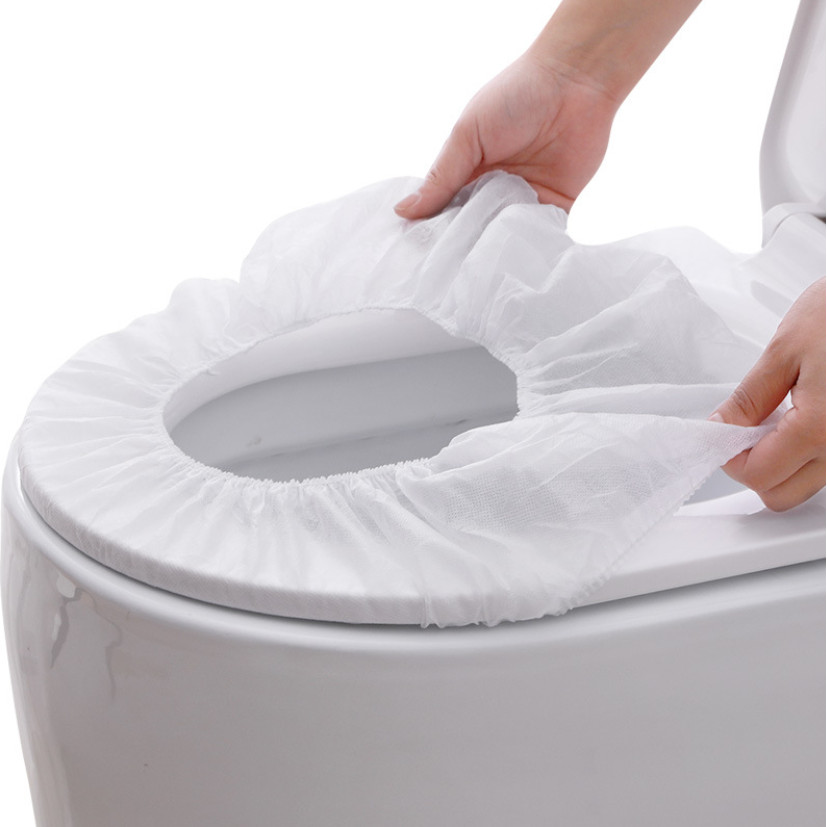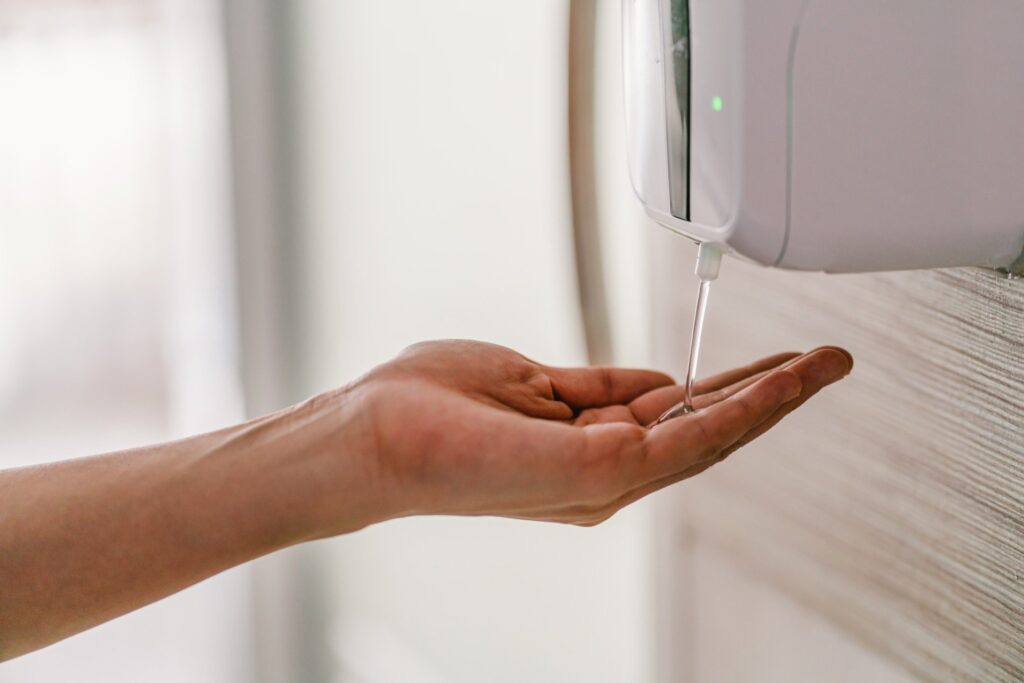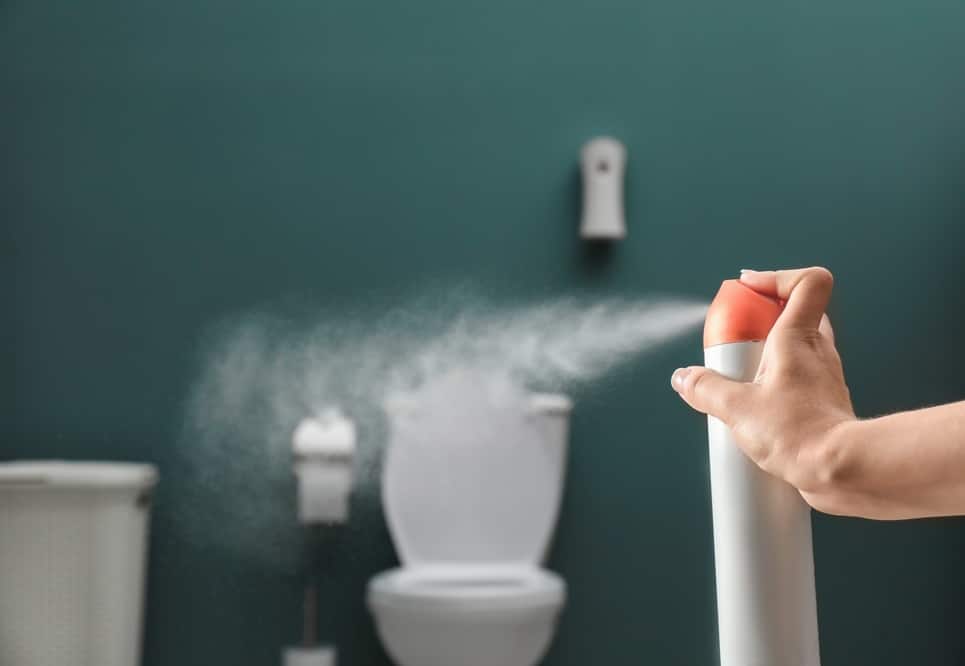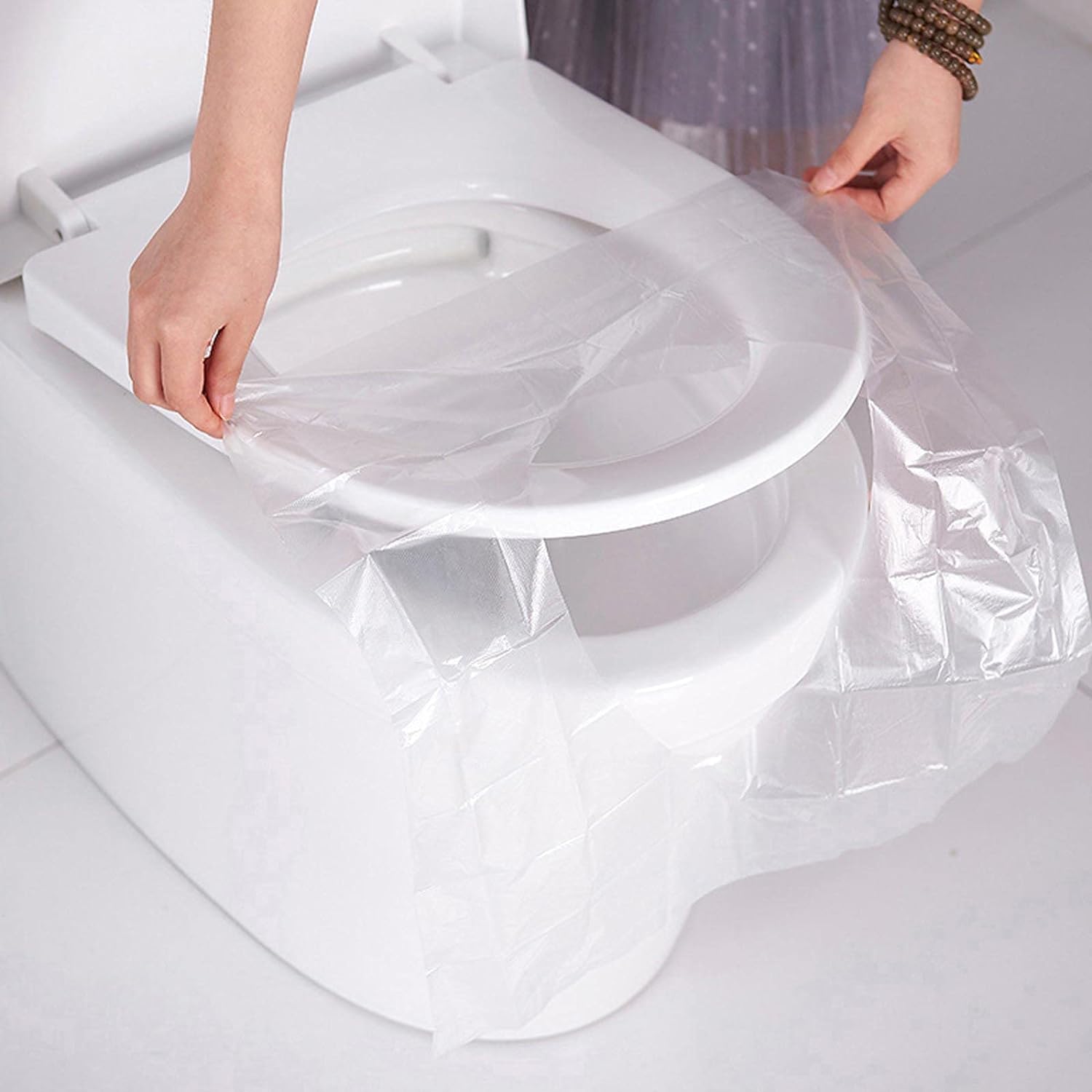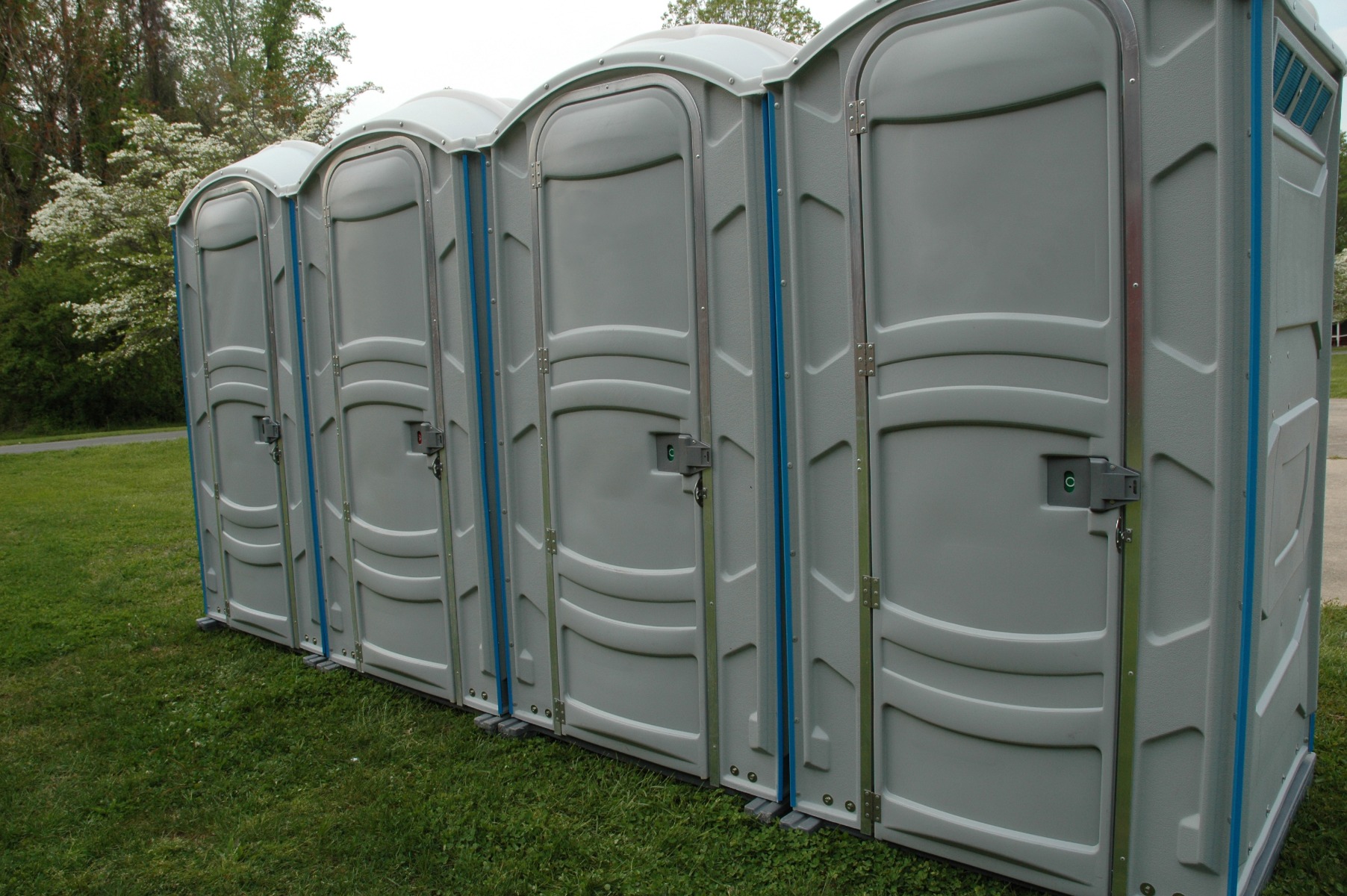Portable restrooms are a common sight at outdoor events, construction sites, and various other locations where access to permanent restroom facilities is limited. These portable units offer convenience and comfort to users, but one aspect that often raises concerns is the cleanliness of the seat. To address this issue, disposable seat covers have emerged as a popular solution. This article aims to provide a comprehensive guide on how these seat covers work in portable restrooms.
In order to understand the functionality of disposable seat covers, it is helpful to consider a hypothetical scenario: imagine attending an outdoor music festival with thousands of attendees. As you approach the row of portable restrooms, you notice each unit equipped with neatly folded paper seat covers placed conveniently next to the toilet bowl. Curiosity piques your interest – how exactly do these seemingly simple yet effective products work? The answer lies in their design and purposeful engineering, which ensures both hygiene and ease-of-use for individuals utilizing portable restrooms.
Disposable seat covers typically consist of lightweight materials such as biodegradable paper or plastic films that ensure easy disposal after use. Their primary function is twofold: first, they act as a physical barrier between the user’s skin and the potentially unclean surface; secondly, they help prevent any liquid or substances from coming into direct contact with the user.
When using a disposable seat cover, the process is straightforward. Begin by taking a seat cover from its dispenser or container, which is usually located within easy reach near the toilet bowl. Unfold the seat cover completely to its full size, ensuring that it covers the entire seating area of the toilet. Some seat covers may have tabs or flaps that can be tucked into the sides of the toilet bowl for added stability.
Once properly positioned, sit on the seat cover as you would on a regular toilet seat. The cover will provide a hygienic barrier between your skin and any potential contaminants present on the surface. After use, simply stand up and flush as normal. Most disposable seat covers are designed to dissolve in water and can be safely flushed down the toilet along with waste.
It’s important to note that while disposable seat covers offer an additional layer of protection and cleanliness, they do not replace basic hygiene practices such as proper handwashing before and after using restroom facilities.
In conclusion, disposable seat covers play a crucial role in maintaining hygiene and comfort in portable restrooms. They provide users with peace of mind by acting as a physical barrier between their skin and potentially unclean surfaces. By following simple instructions, individuals can easily utilize these seat covers for added cleanliness during their restroom visits at outdoor events, construction sites, or any location where portable restrooms are used.
Why Use Seat Covers in Portable Restrooms?
Imagine attending a large outdoor event, such as a music festival or sporting event. You find yourself needing to use one of the portable restrooms provided on-site. As you enter, you notice the seat is covered with a disposable seat cover. This simple addition may seem inconsequential at first glance, but there are several important reasons why seat covers are used in portable restrooms.
First and foremost, seat covers provide a hygienic barrier between users and the toilet seat. In crowded environments where multiple people utilize the same restroom facilities, it becomes crucial to minimize direct contact with potentially contaminated surfaces. By placing a disposable seat cover over the toilet seat before use, individuals can greatly reduce their exposure to germs and bacteria.
To further emphasize the importance of using seat covers in portable restrooms, consider the following emotional responses that might arise without them:
- Anxiety: The thought of sitting directly on a public toilet seat can be anxiety-inducing for many individuals who value cleanliness and personal hygiene.
- Disgust: Seeing visible stains or debris on an uncovered toilet seat can trigger feelings of disgust and repulsion.
- Fear: Concerns about contracting illnesses or infections from unsanitary conditions may lead to fear and apprehension while using shared restroom facilities.
- Unease: Without proper protection, some individuals might feel uneasy or uncomfortable throughout their entire bathroom experience.
To illustrate this concept more clearly, let’s take a look at how different materials commonly found in disposable seat covers compare when it comes to providing comfort and protection. The table below summarizes key characteristics of three popular types of disposable seat covers:
| Material | Advantages | Limitations |
|---|---|---|
| Paper | Biodegradable | Less durable than other options |
| Plastic | Waterproof | Non-biodegradable |
| Biofilm | Biodegradable & waterproof | Relatively new and less commonly available |
Understanding the material of disposable seat covers allows individuals to make informed decisions based on their preferences and concerns. By weighing the advantages and limitations, users can choose a seat cover that aligns with their values while ensuring optimal hygiene.
Transitioning into the subsequent section about understanding different materials of disposable seat covers, it is essential to explore how these materials differ in terms of comfort, protection, and environmental impact.
Understanding the Material of Disposable Seat Covers
Imagine this scenario: You are attending a large outdoor event, and nature calls. As you enter one of the portable restrooms, you notice a neatly organized stack of disposable seat covers. These thin sheets made from various materials serve as a barrier between your skin and the toilet seat. But have you ever wondered about the material used to create these essential accessories? Understanding the different materials used in disposable seat covers can provide valuable insights into their effectiveness and overall comfort.
Disposable seat covers come in various materials, each with its unique properties and benefits. Some common examples include:
- Paper-based covers: Made from lightweight paper, these covers offer an affordable option for providing sanitation and protection against germs.
- Plastic-based covers: Manufactured using plastic or polyethylene, these covers are more durable compared to paper alternatives and often feature waterproof qualities.
- Biodegradable covers: Designed with environmental sustainability in mind, biodegradable seat covers are typically made from plant-based materials such as bamboo or cornstarch.
- Non-woven fabric covers: Constructed from synthetic fibers that are bonded together, non-woven fabric seat covers offer softness and strength simultaneously.
Understanding the material composition of disposable seat covers is crucial for both users and providers of portable restroom rentals. By selecting the appropriate material based on specific needs, organizers can ensure optimal user experience while promoting hygiene standards at events or construction sites.
To further illustrate the importance of choosing suitable disposable seat cover materials, consider the emotional response evoked by this table showcasing key factors associated with different cover types:
| Cover Type | Durability | Comfort | Hygiene |
|---|---|---|---|
| Paper-based | Low | Moderate | Good |
| Plastic-based | High | Low | Excellent |
| Biodegradable | Moderate | High | Good |
| Non-woven fabric | High | High | Excellent |
As you can see, the choice of material impacts various aspects of seat cover performance. The emotional response evoked by this table highlights the importance of considering factors such as durability, comfort, and hygiene when selecting disposable seat covers.
Now that we have explored the different materials used in disposable seat covers, let us delve deeper into how these covers are secured within portable restrooms and understand their mechanism.
The Mechanism of Securing Seat Covers in Portable Restrooms
When it comes to portable restroom rentals, disposable seat covers play a crucial role in maintaining hygiene and ensuring a pleasant experience for users. In this section, we will explore how these seat covers work and the various materials that are commonly used.
To better understand the functionality of disposable seat covers, let’s consider an example scenario. Imagine you are attending an outdoor event where multiple portable restrooms are provided. As you enter one of these restrooms, you notice a dispenser filled with neatly folded disposable seat covers mounted on the wall. You take one of these covers and unfold it carefully before placing it on the toilet seat. This simple act not only protects against germs but also provides peace of mind during your time inside the facility.
The mechanics behind disposable seat covers involve using lightweight materials such as paper or plastic that can be easily discarded after use. Here is an overview of their key features:
- Hygiene: Disposable seat covers act as a barrier between users and potentially unclean surfaces, minimizing direct contact.
- Portability: These seat covers are designed to be compact and conveniently stored in dispensers located within portable restrooms.
- Easy installation: Most disposable seat covers come pre-folded and ready to use, allowing for quick placement onto toilet seats.
- Eco-friendliness: Many manufacturers now offer biodegradable options for those who prioritize sustainability.
To further illustrate their importance, here is a table highlighting some benefits associated with using disposable seat covers:
| Benefits |
|---|
| 1. Provides protection against germs |
| 2. Promotes cleanliness in shared facilities |
| 3. Offers peace of mind to restroom users |
| 4. Convenient and easy to use |
As we delve into the subsequent section about “Benefits of Using Disposable Seat Covers,” we will explore how these advantages contribute to overall user satisfaction and improved sanitation practices in portable restrooms. So let’s continue our exploration of the benefits that come with incorporating disposable seat covers into these facilities.
Benefits of Using Disposable Seat Covers
Imagine a scenario where you find yourself at an outdoor event, needing to use a portable restroom. As you enter the stall, you notice a neatly folded disposable seat cover placed on top of the toilet seat. Curiosity piques your interest as to how these covers actually work and provide protection. In this section, we will explore the mechanism behind securing seat covers in portable restrooms.
The primary purpose of disposable seat covers is to create a barrier between the user and the toilet seat, ensuring hygiene and cleanliness. These covers are typically made from lightweight materials such as paper or plastic, designed for single-use convenience. Here’s how they work:
- Proper placement: Disposable seat covers come with pre-folded creases that make them easy to unfold and position correctly over the toilet seat. The shape and size of the cover allow it to fit snugly onto most standard-sized seats.
- Adhesive strips: To ensure stability during use, most disposable seat covers feature adhesive strips on their underside. Once positioned properly on the toilet seat, users can press down firmly so that the adhesive sticks securely to the surface.
- Tear-off tabs: Some manufacturers include tear-off tabs along the edges of their seat covers, which help facilitate easy removal after use. Users can simply pull on these tabs, detaching any potentially contaminated parts without touching them directly.
- Disposal options: After using a disposable seat cover, there are multiple disposal methods available depending on the facilities provided by the portable restroom service provider or event organizers. It is essential to follow proper disposal guidelines to maintain sanitation standards effectively.
To better understand why disposable seat covers are crucial for maintaining hygiene in portable restrooms, let’s take a look at some emotional benefits they offer:
- Comfort: Using a clean and protected toilet seat helps individuals feel more comfortable while using public restrooms.
- Confidence: Disposable seat covers provide users with peace of mind, knowing that they are taking necessary precautions to minimize contact with potentially unclean surfaces.
- Health and safety: By acting as a barrier between the user and the toilet seat, disposable covers reduce the risk of exposure to harmful bacteria or viruses.
- Convenience: The lightweight and portable nature of these seat covers make them easily accessible for individuals on-the-go.
To summarize, disposable seat covers in portable restrooms offer an effective mechanism for maintaining cleanliness and hygiene. They adhere securely to the toilet seats through adhesive strips while providing comfort, confidence, health benefits, and convenience to users. Now let’s explore the next topic: Proper Disposal of Seat Covers in Portable Restrooms.
Proper Disposal of Seat Covers in Portable Restrooms
When it comes to maintaining hygiene in portable restrooms, disposable seat covers offer a convenient and effective solution. Let’s explore how these seat covers work and why they are an essential addition to any portable restroom rental.
Imagine attending a large outdoor event with hundreds of attendees. The line for the portable restrooms is long, and as you finally make your way inside, you notice that the toilet seat is dirty and unappealing. However, thanks to the presence of disposable seat covers, you can avoid direct contact with the unsanitary surface. These lightweight coverings act as a barrier between you and potential germs or bacteria on the toilet seat.
To further illustrate the benefits of using disposable seat covers, consider the following:
- Hygiene: Disposable seat covers provide users with peace of mind by reducing the risk of coming into contact with harmful pathogens commonly found on toilet seats.
- Convenience: These seat covers are compact and easy to carry, making them ideal for use in various settings such as concerts, festivals, construction sites, or camping trips.
- Eco-friendly options: Many disposable seat covers are made from biodegradable materials, ensuring minimal impact on the environment.
- Cost-effectiveness: Compared to traditional cleaning methods or constant replacement of permanent plastic seating systems, disposable seat covers offer a more economical option for maintaining cleanliness in portable restrooms.
| Pros | Cons |
|---|---|
| Provides hygienic protection | May contribute to additional waste |
| Convenient and easily portable | Limited availability in some locations |
| Environmentally friendly | Requires proper disposal |
| Cost-effective | Not suitable for all types of toilets |
In summary, disposable seat covers serve as an efficient tool for promoting hygiene in portable restrooms. Their convenience, cost-effectiveness, and eco-friendly options make them highly desirable additions to any rental service offering porta-potties. Now, let’s move on to the next section and explore some essential tips for choosing the right seat covers for portable restroom rental.
Tips for Choosing the Right Seat Covers for Portable Restroom Rental
Section Title: How Disposable Seat Covers Work: A Guide for Portable Restroom Rental
Understanding the proper disposal of seat covers in portable restrooms is crucial, but it’s equally important to comprehend how disposable seat covers actually work. In this section, we will delve into the mechanisms behind these innovative products and explore their benefits for both users and rental providers.
Paragraph 1:
To illustrate the functionality of disposable seat covers, let us consider a hypothetical scenario. Imagine you are attending an outdoor event with portable restroom facilities. As you enter one of these units, you notice a stack of individually packaged seat covers beside the toilet bowl. These thin sheets may seem insignificant at first glance, but they serve as effective barriers between your skin and any potentially unclean or unsanitary surfaces. When properly used, disposable seat covers provide peace of mind by minimizing contact with germs or contaminants that could be present on public toilet seats.
Now let’s take a closer look at how disposable seat covers work:
- They are designed to fit most standard-sized toilet seats, ensuring compatibility across different portable restroom models.
- Made from lightweight yet durable materials such as biodegradable paper or plastic film, they offer convenience without compromising hygiene.
- Some seat covers come equipped with adhesive strips on the underside to secure them firmly onto the surface, preventing slipping during use.
- The perforated edges allow easy tearing along predetermined lines for effortless disposal after each use.
Paragraph 2:
The advantages of using disposable seat covers extend beyond personal hygiene; they also contribute to maintaining cleanliness within portable restroom rentals. Here is a bullet point list summarizing key benefits:
- Promotes good sanitation practices by encouraging individuals to cover the toilet seat before usage.
- Reduces cleaning efforts and costs associated with removing potential messes left behind on uncovered surfaces.
- Enhances user satisfaction by providing an additional layer of comfort and confidence when utilizing shared restroom facilities.
- Demonstrates the commitment of rental providers to prioritize customer well-being and hygiene standards.
To further understand the impact of disposable seat covers, consider the following comparison table:
| Feature | Traditional Seat Covers | Disposable Seat Covers |
|---|---|---|
| Material | Cloth or fabric | Biodegradable paper/plastic film |
| Reusability | Requires washing | Single-use |
| Ease of Use | May require folding/adjusting | Conveniently dispensed, ready-to-use |
| Hygiene Maintenance | Potential for cross-contamination | Minimizes direct contact with surfaces |
By examining these characteristics side by side, it becomes evident why many portable restroom rentals have transitioned from traditional cloth seat covers to more practical and hygienic disposable options.
In summary, understanding how disposable seat covers work is essential not only for users but also for rental providers. These simple yet effective products act as protective barriers against potential contaminants on public toilet seats. By prioritizing cleanliness and user satisfaction, portable restroom rentals can enhance their overall service quality while promoting good sanitation practices among individuals at various events or locations.

